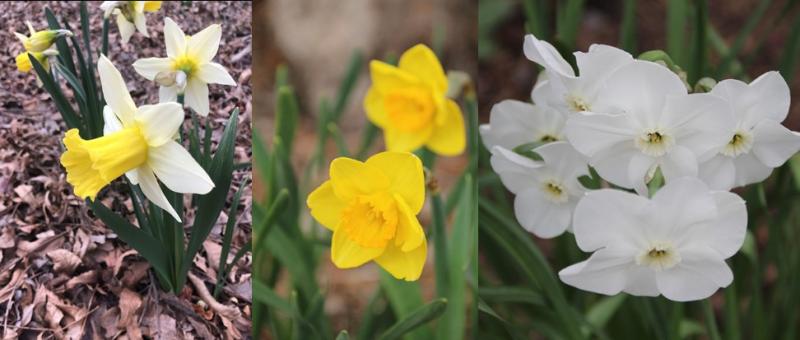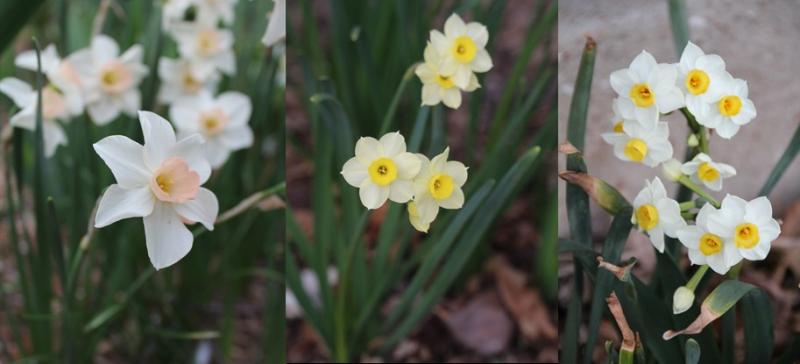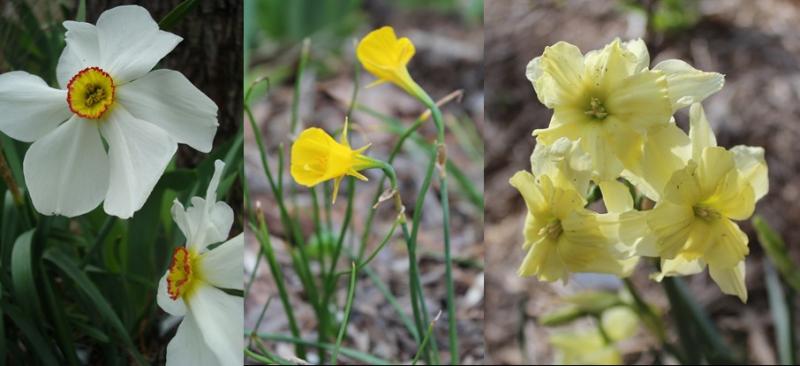Who doesn’t recognize a daffodil on sight, even with their myriad of forms and colors? ‘February Silver’ is always the first to bloom in my jungle, and it never fails to elicit that thrill of excitement that spring is definitely on its way! I drove by a motivational sign recently that read “Do something today that your future self will thank you for.” That could apply to so many activities, but for right now, I’m applying it to planting bulbs. Every year I place my bulb orders early, because I know that if left to later, none would ever get planted. By the end of the growing season, I just mentally and physically want to take a break…not plant bulbs! I’ll admit that when my bulb order does show up, there is still a lot of self-directed complaining about the amount of work still to be done, but it does get done. But, boy howdy! My future self is today looking at all those beautiful blooms brightening my garden, and I am definitely thankful I planted a few more bulbs.
There are thirteen descriptive divisions for standard daffodils, and I try to make a point of selecting cultivars across all the divisions for maximum diversity and impact. For full description of each of the divisions, visit the American Daffodil Society at https://daffodilusa.org/daffodil-info/daffodil-divisions-cultivars/. The divisions “for the most part” are based on floral structural characterizes, but daffodils also come in an array of colors both singular and mixed, including white, yellow, orange, pink, red and green. Put those two features together and you have a collector’s dream.
Daffodils appreciate well- drained soil and a sunny to slightly shaded location. In the jungle, I tend to plant earlier blooming daffodils under deciduous trees to maximize sun interception before overhead trees leaf out. I avoid planting under evergreens or other heavily shaded areas. With good care, daffodils will multiply at various rates, making an increasingly beautiful display every year. One thing to keep in mind though, decreased bloom indicates overcrowding. Wait to dig and divide after foliage yellows initiate bloom again.



